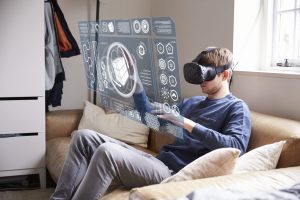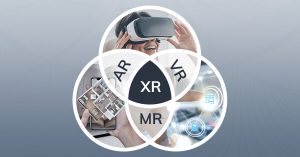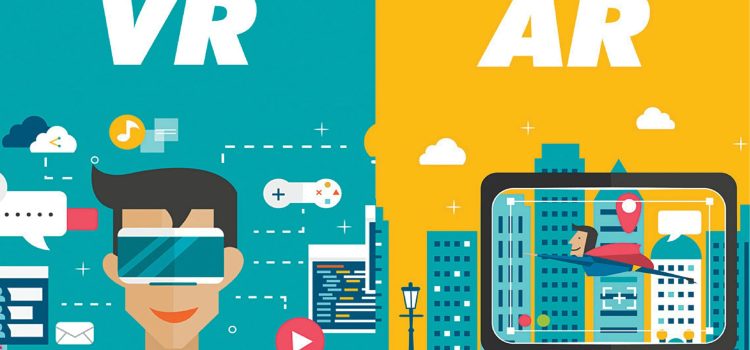
Introduction

Author Introduction: Lisa Thompson, a technology enthusiast and digital innovation expert with over 15 years of experience, has been at the forefront of exploring how emerging technologies like Augmented Reality (AR) and Virtual Reality (VR) are reshaping various sectors. With a Master’s degree in Computer Science and a passion for immersive tech, Lisa provides a deep dive into the next generation of AR and VR experiences.
- Introduction to AR and VR Technologies
Augmented Reality (AR) and Virtual Reality (VR) are transforming the way we interact with the digital world. While AR overlays digital information onto the physical world, VR creates a completely immersive digital environment. This article explores how these technologies are creating next-generation experiences across various industries.
- Revolutionizing the Gaming Industry
AR and VR have significantly impacted the gaming industry, providing immersive experiences that were once unimaginable. VR headsets like the Oculus Rift and AR games like Pokémon Go have set new standards for interactive entertainment. These technologies allow players to step inside their favorite games, enhancing engagement and realism.
- Transforming Education and Training
In education, AR and VR are revolutionizing learning by creating interactive and immersive educational experiences. Virtual field trips, 3D visualization of complex concepts, and realistic simulations provide students with engaging ways to learn. Medical students, for example, can practice surgeries in a risk-free virtual environment, improving their skills and confidence.
- Enhancing Retail and E-Commerce
Retail and e-commerce are also benefiting from AR and VR technologies. Virtual fitting rooms and AR apps allow customers to try on clothes and accessories or see how furniture would look in their homes before making a purchase. This enhances the shopping experience, reduces returns, and increases customer satisfaction.
- Innovating Healthcare and Therapy
In healthcare, AR and VR are being used for various applications, from surgical training to patient therapy. VR can help patients with anxiety and PTSD through exposure therapy in a controlled virtual environment. Surgeons use AR to visualize complex procedures, improving accuracy and outcomes.
- Revolutionizing Real Estate and Architecture
Real estate and architecture are embracing AR vs VR for virtual tours and design visualization. Potential buyers can explore properties without being physically present, and architects can present 3D models of buildings to clients. This technology streamlines the design process and enhances client engagement.
- Advancing Workplace Collaboration
AR and VR are changing the way we collaborate in the workplace. Virtual meeting rooms and AR-enhanced workspaces enable remote teams to interact and work together as if they were in the same physical space. This improves communication, reduces travel costs, and fosters a more connected workforce.
- Challenges and Future Prospects

Despite the many benefits, AR and VR technologies face challenges such as high costs, technical limitations, and the need for extensive content creation. However,
the future prospects are promising. Continuous advancements in hardware and software, along with growing developer communities, are set to overcome these hurdles, paving the way for even more innovative and accessible immersive experiences.
Informative Table: Key Applications of AR and VR
| Application Area | Description | Example Use Cases |
| Gaming | Immersive, interactive entertainment experiences | Oculus Rift, Pokémon Go |
| Education and Training | Interactive and immersive learning environments | Virtual Field Trips, Medical Simulations |
| Retail and E-Commerce | Enhanced shopping experiences with virtual try-ons and visualizations | Virtual Fitting Rooms, AR Home Decor Apps |
| Healthcare and Therapy | Medical training, patient therapy, and procedural visualization | VR Exposure Therapy, AR Surgery Guides |
| Real Estate and Architecture | Virtual tours and 3D design visualization | Virtual Property Tours, 3D Building Models |
| Workplace Collaboration | Improved remote work and collaboration through virtual and augmented spaces | Virtual Meeting Rooms, AR Workspaces |
Comparative Table: Traditional Methods vs. AR/VR Technologies
| Feature | Traditional Methods | AR/VR Technologies |
| Gaming Experience | 2D Screens, Limited Interaction | 3D Immersion, Full Interaction |
| Education and Training | Textbooks, Static Models | Interactive Simulations, Real-time 3D |
| Retail Shopping | Physical Try-Ons, Showrooms | Virtual Try-Ons, AR Visualization |
| Medical Training | Observational Learning, Cadaver Labs | Risk-Free Virtual Practice, Realistic Simulations |
| Real Estate Tours | Physical Walkthroughs, Photos | Virtual Walkthroughs, Interactive 3D Models |
| Workplace Collaboration | Emails, Video Calls | Virtual and AR-enhanced Meetings |
Conclusion
AR and VR are at the forefront of a technological revolution, offering immersive experiences that are transforming industries and enhancing daily life. From gaming and education to healthcare and retail, these technologies are redefining how we interact with the world around us. As advancements continue and challenges are addressed, AR and VR will become increasingly integrated into our everyday lives, offering unprecedented opportunities for innovation and engagement.
This article, authored by Lisa Thompson, leverages her extensive experience in digital innovation and immersive technologies to provide a comprehensive overview of how AR and VR are shaping the next generation of experiences. Whether you are a tech enthusiast, industry professional, or curious reader, this detailed analysis offers valuable insights into the transformative power of AR and VR.










